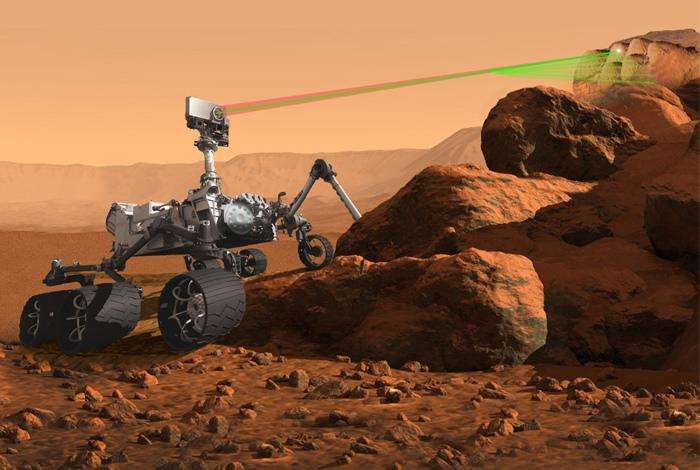Thales has delivered the SuperCam instrument for NASA's Mars 2020 rover mission, which aims to place a rover equipped with latest-generation instruments on the surface of Mars in 2020.
Thales has delivered the SuperCam instrument for NASA's Mars 2020 rover mission, which aims to place a rover equipped with latest-generation instruments on the surface of Mars in 2020. The rover — designed to follow in the footsteps of Curiosity — is currently in assembly at the Jet Propulsion Laboratory (JPL).
SuperCam, an evolved version of the ChemCam laser on Curiosity, has been handed over to France's CNES space agency, which is partnering NASA for Mars 2020. The ChemCam laser developed by Thales for CNES and which has fired over 500,000 times to date, was the first-ever power laser to operate on another planet.
In addition to the laser-induced breakdown spectroscopy (LIBS) system used on ChemCam, the SuperCam instrument also features a non-destructive Raman spectroscopy mode for the analysis of molecular vibration energies. This analysis technique has never been tested on Mars and will be used to look for the possible indicators of life.
The SuperCam laser can produce 10 times as many shots in burst mode for faster sampling — 1,000 shots per burst, compared to a maximum of 100 with ChemCam and at a frequency three times higher (10Hz). All this has been achieved in an extremely short timeframe of just three years, whereas a typical space programme would have a development cycle of nearer 10 years.
Thales has developed the optomechanical part of the SuperCam laser (optics and associated mechanical elements), excluding the electronics provided by the IRAP astrophysics and planetology research institute. IRAP is also responsible for qualification and testing of the instrument in the kinds of conditions it will experience on Mars (temperature, shock, vibration, radiation, other impacts on service life, etc.).
The Los Alamos National Laboratory (Los Alamos, NM) and the IRAP astrophysics and planetology research institute (CNRS, Univ. of Toulouse, CNES) are jointly responsible for delivering the SuperCam instrument to NASA.

